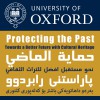The Citadel of Kirkuk: Reconnaissance and assessment of its archaeological heritage (English translation)
The citadel at Kirkuk, the natural focal point of the city with almost one million inhabitants, represents a North Iraqi cultural and archaeological monument of great potential. The relics of the fortified, Late Ottoman town quarter are situated on the summit of an extremely large tell (15,8 ha), rising on the height about 20–30 m on the left bank of the Khasa Sou River. The tell appeared to be an élite residence and regional centre as late as in the Middle-Assyrian (Mitanni) Period (the 16th-14th centuries BC), as textual sources indicate. Although no archaeological data have been obtained from the area so far, much earlier origins of settlement of the tell are highly probable.
The heritage area of the citadel witnessed an unprecedented, planned destruction, labelled euphemistically as a „beautification action“ and building of museum of architecture, in the late Saddam era (1997–1998). All three thousands of inhabitants of the citadel, mostly Kurdish and Turkoman, were moved out and the quarter (about 700–850 houses) was completely bulldozed, except of nine isolated monuments and nine small groups of „most valuable“ houses. Subsequently, a part of these structures underwent hard renovations by use of inapropriate methods and materials (in 1998–2003), the citadel area, however, remained unsettled till present and all the architectural remains, both renovated and authentic, are in ruins or seriously endangered.
Even in ruins or remodelled, the preserved houses represent a unique specimen of regional, Late Ottoman town architecture, different from that in Baghdad or Arbil. The standing religious monuments (mainly Prophet Daniel Mosque. Great Mosque and Gog Kumbet Tomb) are famous sites of pilgrimage and worship both for Muslims and Christians. The site apparently sustains a not negligible potential for local turism, religious contacts and cultural exchange.
The presented project comes from our previous experience in archaeological evaluation of Arbil citadel (2006–2009). It aims generally to 1. gather all available data about historical substance of the citadel building and its archaeological stratification, 2. structure that data to an project of information system of the citadel, and 3. prepare a complex documentation and assessment report about archaeology and architecure of the citadel. The project will mostly rely on non-invasive, intensive methods of archaeological research and recording (archaeological surface survey, collection of surface finds, historical building analysis, remote sensing) and will have following stages:
1. collecting of data (old plans and photographs, satellite and aerial images, oral history, all types of archaeological survey and recording, photogrammetry, possibly geophysical survey)
2. creation and feeding of the information database system based on a digital, three-dimensional model of the citadel (see a demo-version of similar database created for the Arbil citadel http://lfgm.fsv.cvut.cz/citadel/)
3. analysis and interpretation of data in the form of an assessment report which should give a first reliable information about stratigraphy and architecture of the heritage area, as well as of its value and potential for future research. Some proposals for conservation and public presentation of the monuments have to be also a part of the report. Thus, the results could be integrated into the realization phase of the recent masterplan of the Kirkuk city.
The proposed project will be carried out in close cooperation with the State Board of Antiquities at Baghdad, Directorate of Antiquities at Kirkuk, with specialist from Salahaddin University at Arbil, Department of Archaeology (Prof. Dr. Narmin A. M. Amin) and several Czech scientific institutions.




